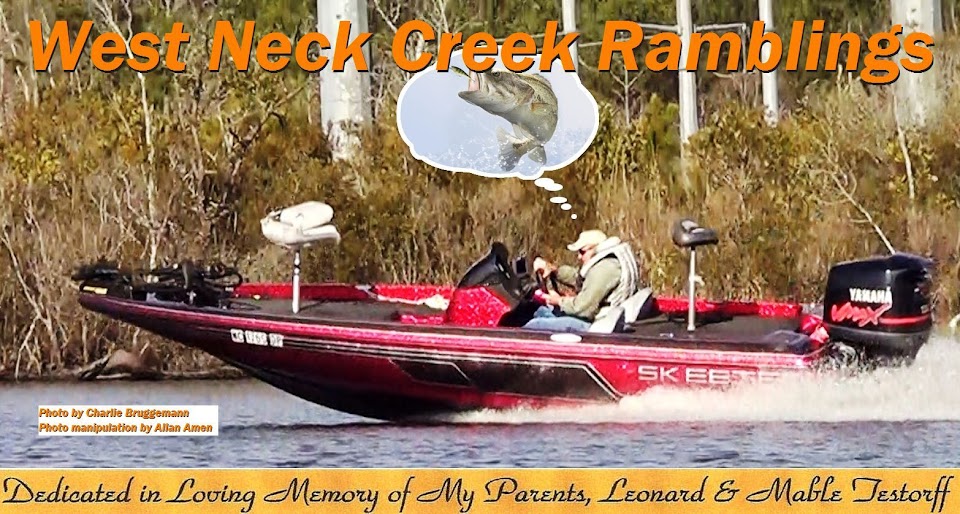Ito has found plenty of success on the water, with seven Top 10 finishes, including a win on the St. Lawrence River, New York, in less than three full seasons on the Elite Series trail. During his short stint as a professional bass angler in America, Ito has opened some eyes with his Japanese techniques, including the free rig.
A hybrid, this rig shares some aspects of the popular Texas and Carolina rigs. It uses a weight with a hole at the top through which anglers thread their line, tie their hook, and then rig their soft-plastic bait. As the rig is cast, the weight falls first, and the soft plastic falls slowly behind it in a free-flowing and unpredictable way. As Ito says, this falling action is what makes it so deadly.
While similar to the Texas rig, the free rig is not the same.
"The Texas rig is much better for heavy cover, but the free rig is the best for suspended fish," explained Ito. "It started getting popular in Japan about five years ago on Lake Biwa, which has a lot of grass like Lake Guntersville in Alabama. The bass would suspend over the grass and were hard to catch until they started using the free rig."
As noted by Ito, the free rig is a perfect solution to fool finicky bass all four seasons.
"It shines the best, however, around grass, brush piles, and when bass suspend under docks," he said. "Most of the time, it's done between 5 and 25 feet of water. Any shallower," he continued, "and the bass don't suspend as much, and the bait falls too fast. Fifteen feet is the average depth I use it in, but only if the water is warm. If the water is cold, the bass mostly rest on the bottom and don't suspend.
"Letting the free rig fall on a slack line is vital," he said, "because as the weight falls first, you want the plastic to free-fall behind it. The fish usually bite as the bait falls. You will see your line swimming away. I let the bait hit bottom, shake it a few times, and then make another cast."
When fishing the free rig, Ito prefers a setup similar to what most anglers use for jigs and Texas-rigged plastics: a 7-foot to 7-foot 3-inch heavy baitcast rod, paired with a Shimano Metanium XG reel. For line, he uses 17-to-25-pound Seaguar Tatsu fluorocarbon. His favorite is 20-pound, but he'll go heavier on a lake with big fish and lots of trees...like Lake Fork in Texas. It the fish are smaller and/or the lake has less cover, he will use 17-pound but nothing less.
Ito prefers using heavy lines to gain a slower fall from the thicker diameter.
"Lighter line makes the bait fall too quickly," he shared. "You want it to stay in the water column and sink slower, so you can suspend the bait longer."
While many Japanese imports are finesse techniques with downsized baits, Ito prefers large soft-plastic baits with curly tails or plenty of appendages, which helps add time for the bait to fall and attract fish.
"I like baits such as the Zoom Ol' Monster 10-inch worm with a big curly tail, or a big creature bait with a lot of appendages to slow it down," he said. "You want the bait to grab water and fall slowly. Baits like a Senko or fluke fall too fast, since they have straight tails. I also don't like anything less than 4 inches long because they likewise fall too fast."
A simple lead bass-casting sinker will work for the technique, as it has a large opening for the line to flow through and has the perfect teardrop shape for the best fall, but Ito uses free-rig specific weights from Japan. He prefers the Fuji Rig Suberu that's made of tungsten, with a line guide that allows for smooth line movement.
"Normally, I like 1/4-ounce but will use 3/16-ounce for shallower water and 3/8-ounce for deeper brush," he said.
Ito also will use a bobber stopper, adding two of the Ryugi Rubber Stoppers just above his hook. "Without those, the weight can get stuck to the knot sometimes," he added.
Having already proved its worth in Japan, the free rig just might be the next big thing in American bass fishing, too. The rig is simple and gives anglers yet another effective way to rig soft-plastic baits for enticing otherwise stubborn bass to bite.




























.JPG)


